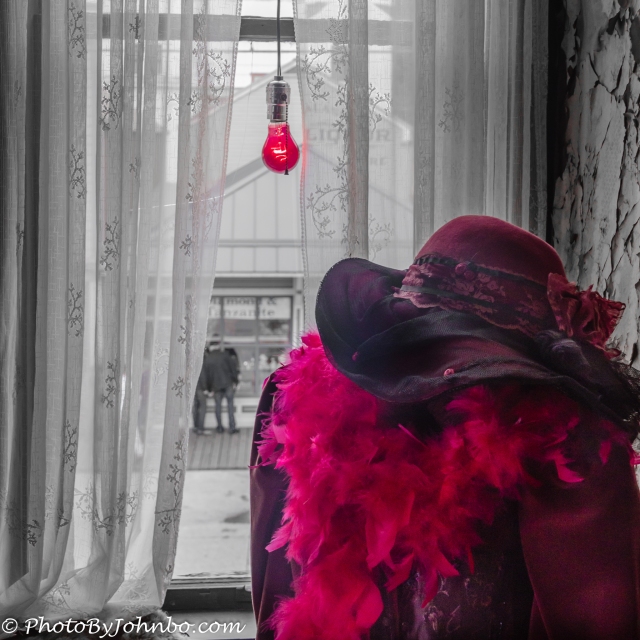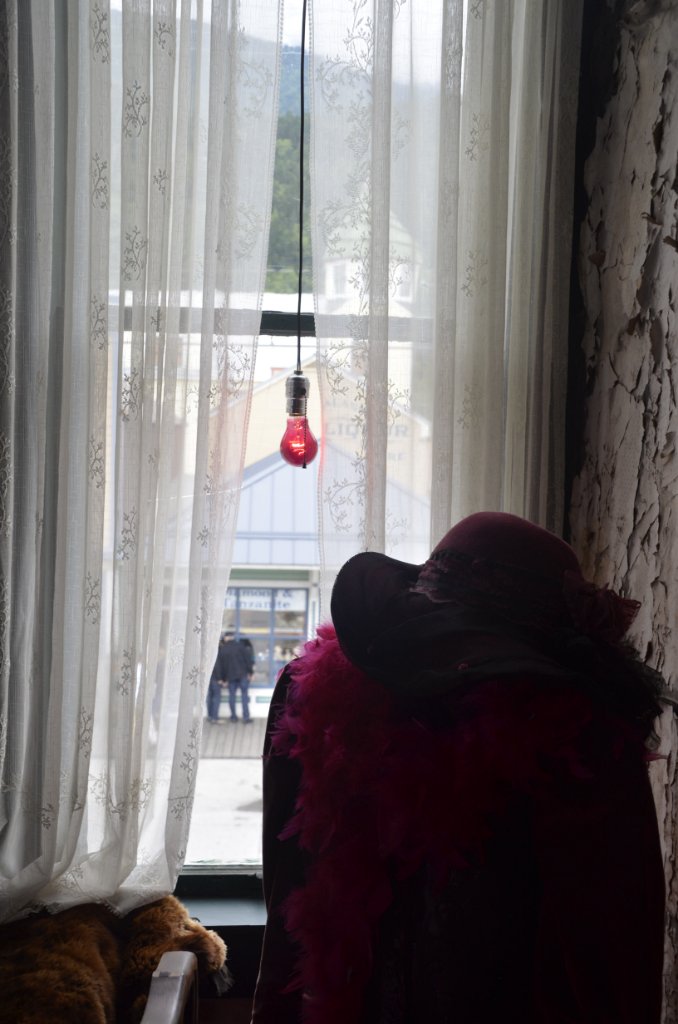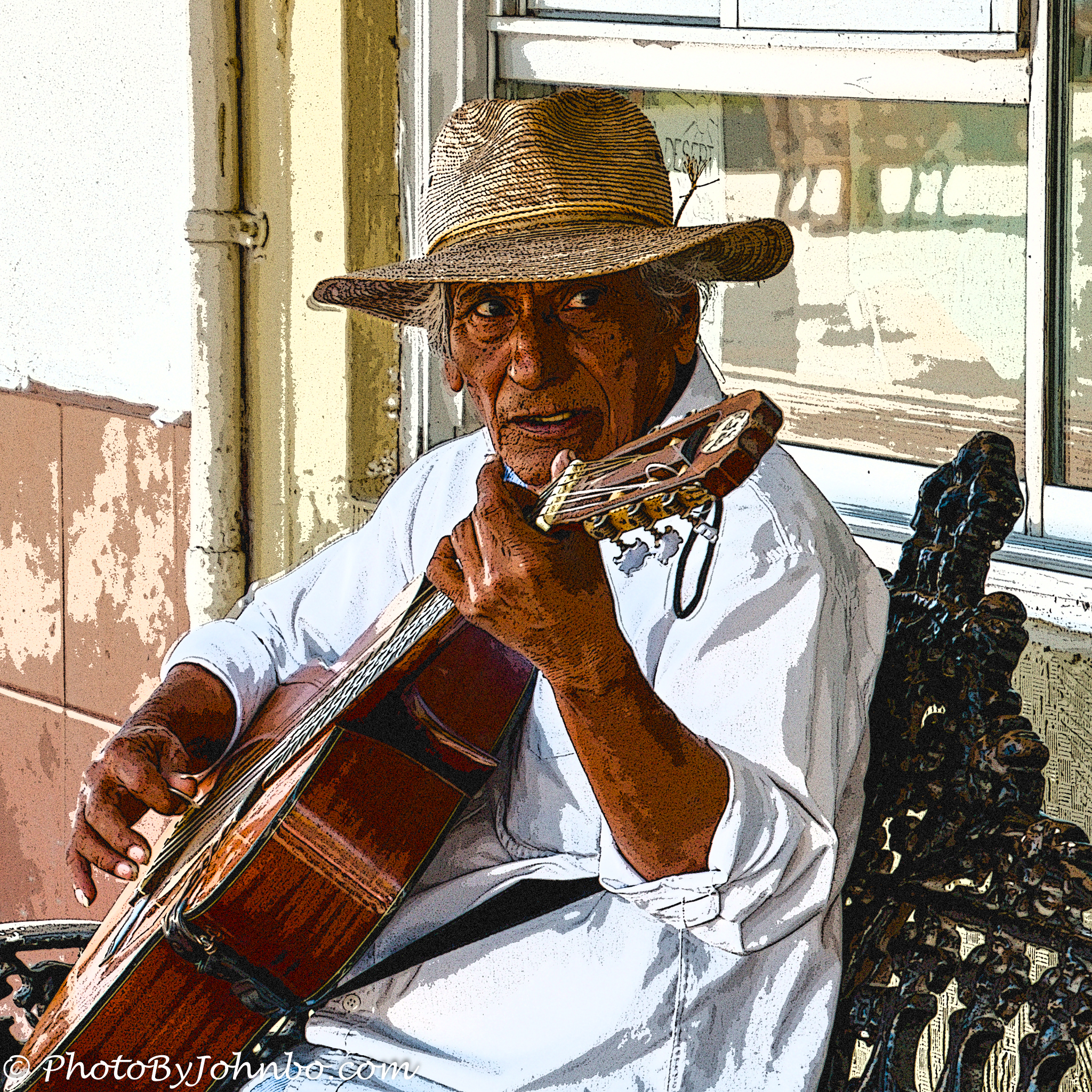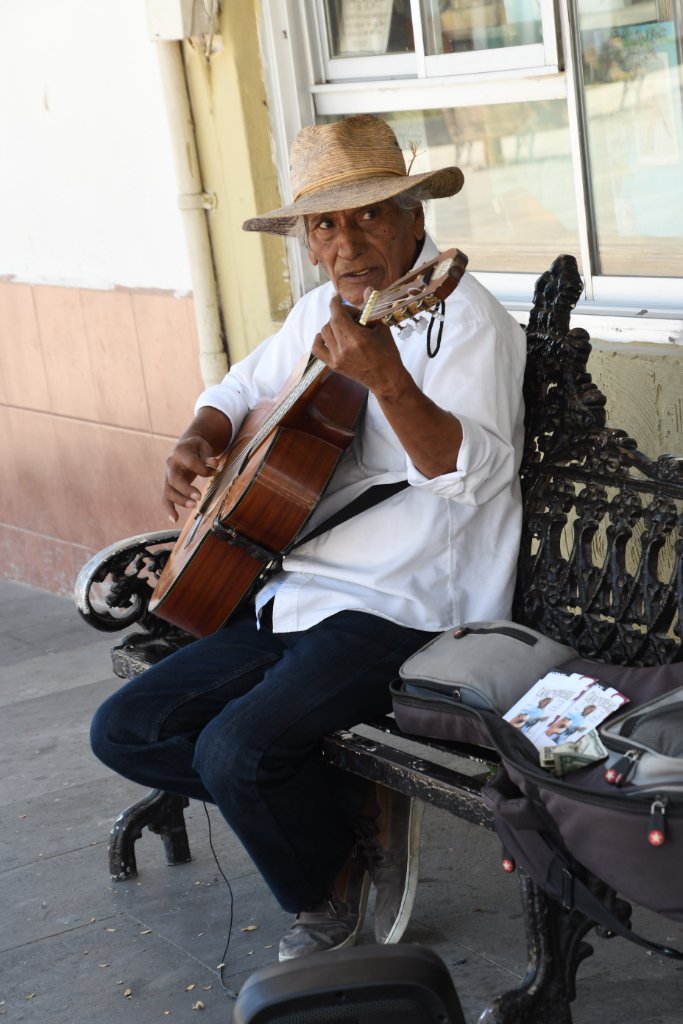Skagway, Alaska.
This week, Tina asks us to share ordinary images, if not forgettable, out of the camera that once edited, were rescued, or maybe even became a favorite in our collection. Tina explains the details here.
For my opening selection, I was reminded of a cruise taken to Alaska a few years back, (my how time flies.) At Skagway, one of our tour stops was in a saloon where, back in the day, the locals might wish to visit one of the ladies in the brothel upstairs.
When the customer made the request of the bartender, he would point at a row of dolls on the shelf. Those dolls that were sitting up represented an available lady, those dolls laying down were “busy.” Upon his selection, the customer would head upstairs and the bartender would lay the chosen doll down.
These days, the saloon is a big attraction to cruise customers, but the brothel has turned into a museum. The upstairs rooms were configured as they might have been during those wild and wooly Klondike gold rush days.
But enough about the museum. The photo immediately above was really a snapshot of one of the bedroom chairs with the lady’s boa and hat on the chair by the window, red light prominently dangling from the ceiling in front of said window. I don’t know when the brothel closed, however, I’m pretty sure that Skagway didn’t have electric lights when the short-lived gold rush was played out. But I digress from discussing the photo.
The original image was framed vertically to include the chair and the window. I would decide to crop the final image square to eliminate the extraneous space above the main subject. Adobe Photoshop Elements came to the rescue to solve for the fact that my camera metered the light in the window leaving the foreground in the dark. I created a mask to increase exposure in the area of the boa and hat. At the last minute, I decided to make the image monocolor to eliminate the blue in the building visible in the window.
On another cruise excursion, this time at a stop in Mexico, an older gentleman sat in the shade on a warm day and worked for tips from the many cruise passengers who walked by. I don’t know what he was looking at, but his music and singing didn’t skip a beat while his eyes were distracted. This image was also edited in Photoshop Elements to add an artistic look. I used a couple of filters, but the only one I remember for sure is the posterizing filter.
There were a couple of problems with my original image. First, I wasn’t holding the camera straight. It looked like the wall is leaning in. I had some weird object in front of me that was captured at the bottom of the image. Since it was a bracketed image, I had three images and plenty of exposure range to choose from. I blended the three images in Lightroom into a single HDR composite.
Another thing I learned early on is that while cropping in the camera is important for capturing a maximum number of pixels for the final image, I’ve often found myself unable to fix an image that was too tightly cropped. With today’s cameras having a high pixel count, I try to adjust my in-camera composition to be larger than needed so I can crop for the best result in the final image.
Thanks to Tina for allowing me to share a couple of “before-and-after” images and describe how they were adjusted to create a couple of favorites.
John Steiner




Nice work John! Your images illustrate a really important point. It doesn’t matter how good you are at editing if your subject is not good in the first place. In both cases here you chose an excellent subject and had good composition and focus. Your edits improved the final results but you had a very good image to start with. Well done. I loved your selective coloring on the first image-that one really tells a story, doesn’t it?! (BTW you forgot to tag so you’re not in the reader.)
Thanks for the comments and especially for the missing tag. I’m having trouble adjusting to the new block editor. Like a couple of other fields, the field for tags is “collapsed” in a drop-down and I tend to overlook it.
So are we all John. It’s just not as intuitive as the old software but I fear we have no choice unfortunately. Several of us have missed it these past weeks.
John, I really like the way you handled these two images! I think featuring the red boa, hat and chair by turning the background into b&w was a great idea. It definitely made your picture much more interesting! And I enjoyed reading about your visit to the museum.
Thank you for the compliment and for taking the time to comment!
Nice treatments John! Well done. I like ’em both.
Thanks!!
Great pics as always, sir. I will add that in my life journey, as far as the American job infrastructure is concerned, I have gone from Favorite to Forgettable.
You and me both, my friend! >grin<
Skagway sounds like a very interesting, if X-rated, destination back in the day…
The cruise tour that took us through the brothel included a lot of information about the sex workers that came to the city during the gold rush. It was fascinating.
Some of the ladies were probably legendary, their fame known far and wide? Here in South Africa during the gold rush to the town of Barberton in the 1880’s a lady named Cockney Liz became an “attraction” almost as widely known at the time as the gold…
I learned about the term, “a pinch in a poke”. Ladies got paid from miners by being allowed to reach into the miner’s poke, his small bag of gold dust. They could keep what they pinched. Ladies would spend time pressing a hard pea between thumb and forefinger for hours at a time. That put a semi-permanent pocket between their fingers allowing them to pinch a larger amount of gold. So I was told, anyway.
That really is fascinating, John. I’ve tried my hand at panning for gold at a local theme park once – South Africa at one time was the world’s leading gold producer – and my lacking skills in that endeavour makes me doubt that, if I lived in Skagway even at the height of the rush, I would’ve ever had enough gold for a poke (literally and figuratively)…
Your first edit is another reminder that there is always a lot of detail hiding in the shadows, details that you can rescue with a little work.
That reason alone is why I bracket almost every photo I take. I know there is detail in the highlights and shadows in every image.
That’s something I should start doing. I get into much more bothersome work with colour decomposition and layer mixing without it.
Lightroom’s HDR tool works beautifully most of the time. When my 1-stop brackets aren’t quite enough, I then resort to layers and masking, as I ended up doing in the boa and hat area.
Yes, layers and masking is a good first thing, if that gives you enough.
Excellent editing, John. I like the treatment of the first one. The second image is remarkable.
Thank you!
It amazes me sometimes what editing can sometimes salvage from what at first review might be a throwaway.
Great job John!
Thanks for the compliment! I am always amazed at how much detail is hidden in RAW files.